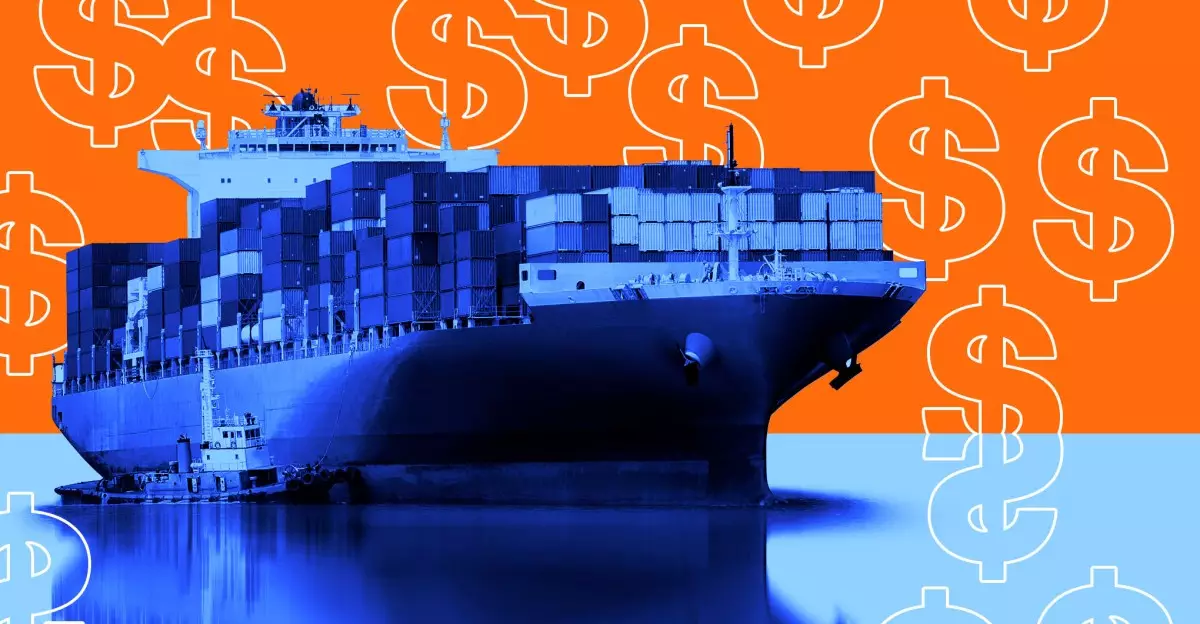The de minimis exemption has long served as a boon for U.S. consumers, allowing individuals to receive packages valued at under $800 without incurring tariffs. For millions, this exemption significantly lowered the costs associated with online shopping, especially for items shipped from high-demand markets like China and Hong Kong. In 2024 alone, approximately 1.4 billion packages availed themselves of this exemption, representing an expansive and often unnoticed facet of e-commerce.
However, the expiration of this policy on May 2nd marks a seismic shift in how consumers will engage with international online retailers. With President Trump’s latest tariff strategies, shoppers and retailers must brace for a new financial landscape where even modest purchases may come riddled with additional expenses.
The Ripple Effect of the Policy Change
The abrupt termination of the de minimis exemption signals more than just a change in tariffs—it’s an operational upheaval poised to disrupt the daily lives of consumers. For many, brands like Temu and Shein have become indispensable, offering a menagerie of goods delivered directly to doorsteps. But with tariffs now imposed, packages will be subject to new fees that could reach 90% of their declared value or a flat fee of $75. This could redefine how American consumers approach affordability and choice.
Many shoppers, oblivious to the nuances of tariff regulations, now face an unwelcome surprise. No longer can they consider low-cost goods from overseas as budget-friendly alternatives without factoring in the prospect of hefty tariffs. This may not only dampen their enthusiasm but might also prompt a significant behavioral shift—leading to decreased online spending and a revival of local purchasing habits.
Logistical Chaos and Operational Challenges
The logistical ramifications of this policy change can’t be overlooked. When the de minimis exemption was originally reviewed back in February, the U.S. Postal Service (USPS) faced a wave of chaos as shippers scrambled to understand the new regulations. Initial statements hinted at a complete halt of packages arriving from China, illustrating the profound confusion this sudden change spurred throughout the shipping industry.
With over a billion packages affected, one must wonder how Customs and Border Protection (CBP) can efficiently process every parcel under the new rules. The notion that cutting down on low-value imports could effectively combat issues like synthetic opioid trafficking belies the sheer volume of packages that must be evaluated. Balancing border security and efficient trade has never been more challenging, creating a fertile ground for inefficiencies and bureaucratic delays as implementation unfolds.
Impacts on E-commerce Dynamics
Many online retailers, including powerhouses like Amazon, have structured their business models around de minimis exemptions, allowing for exceptionally low-cost delivery of goods. The pressing questions are how retailers will reconcile these increased operational costs. Prices may climb, and consumers should prepare for potential pass-throughs of these tariff costs in the form of higher prices or mandatory fees to retrieve their items.
Additionally, industry analysts worry that this will lead to a reduction in product availability within the U.S. market. As tariffs escalate shipping costs, companies may opt to pull back on international inventory, diluting the diversity of products consumers have come to expect from online shopping. Casual users who relied on inexpensive overseas goods might find themselves faced with fewer options as tariffs dissuade retailers from stocking international items.
A Scalability Obstacle
The implementation of new tariff structures is not merely about adjusting value assessments; it’s also about scaling up systems capable of managing the complex regulations surrounding international packages. The tariff plan, while streamlined in some aspects, raises questions around whether the necessary systems are sufficiently equipped to handle the anticipated influx of paperwork and fees attached to the millions of de minimis packages crossing borders every day.
Estimates suggest that managing this increase could cost the U.S. about $3.2 billion annually, prompting further discussions on resource allocation and priorities within government agencies. As regulations evolve, the balance between consumer protection and trade facilitation remains sensitive, and ensuring a functional system where packages are not delayed for excessive scrutiny is crucial for consumer advocacy.
A Market Response
As consumers grapple with these new realities, companies operating in the e-commerce sphere may need to pivot quickly. Brands that once thrived with the help of de minimis exemptions could face insolvency risks as customer expectations clash with escalating costs. It remains to be seen how these companies will adapt to an increasingly regulated marketplace while attempting to retain their consumer base.
In this evolving landscape, consumers and businesses alike must navigate the intricate web of new tariffs, taxes, and operational challenges. Ultimately, the true impact of ending the de minimis exemption will unfold over time, but one thing is certain: the dynamics of online shopping will never be the same.

